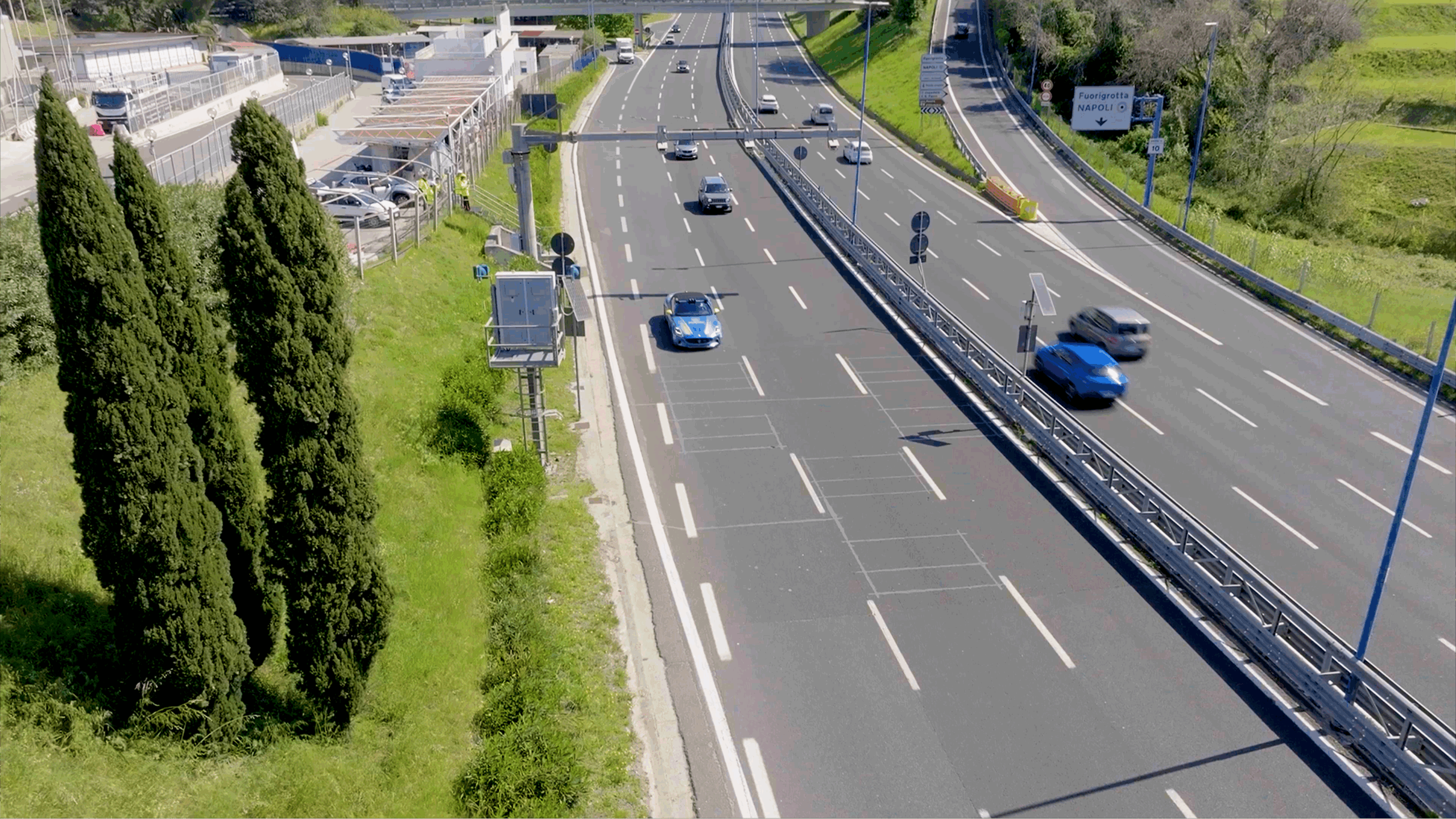An initiative promoted by the Italian Ministry of Infrastructure and Transport
The system developed by Movyon will make it possible to regulate the traveling speed with the aim of improving traffic flow. Expected travel time and emission reductions of up to 15%
Rome – Autostrade per l’Italia carries out functional trials on the “Dynamic Speed Limit”, the first service in Italy that advises motorists of the optimal travel speed in open traffic conditions on the Naples ring road, putting the infrastructure at the center of a new vision of smart mobility. For the first time a fleet of utility vehicles in service on the Naples ring road and a self-driving car, a Maserati GranCabrio Folgore equipped with the Politecnico di Milano’s robo-driver connected to antennas on the network, have received indications on the speed to be maintained in order to avoid building up jams. This was made possible by the latest generation system developed by Movyon, a technological operator of the Aspi Group, which enables interaction between the infrastructure and connected vehicles via antennas distributed along the route and on-board devices. The initiative is promoted by the Italian Ministry of Infrastructure and Transport as part of the National Center for Sustainable Mobility (MOST) projects, and aims to improve the travel experience with a focus on increasingly efficient and safe mobility.
On-road trials. The Traffic Control Center of the Naples ring road receives data on traffic and road events from traffic sensors, portals and smart cameras throughout the infrastructure, and connected vehicles adjust their speeds according to the indications received. The system developed by Movyon feeds this information into a traffic model created by the Università di Napoli Federico II, which processes it and suggests the best speed to improve traffic flow and reduce jams. The demonstration was carried out using both an autonomous connected vehicle capable of automatically adjusting its speed according to the indications received, and some vehicles on the Naples ring road, which were enabled to receive the same information and make it available to the drivers. The aim was to achieve the so-called “green wave” effect to reduce traffic delays and increasing road safety.
In line with studies and simulations carried out internationally, Movyon estimates that adopting this system could potentially reduce emissions and travel times by 5% to 15%, and decrease accidents by 10% to 30%.
Millions of data points collected. Using artificial intelligence together with sensors, portals and cameras, the system has already collected and processed an average of approximately 3.5 million traffic data points per day in just a few days on the Naples ring road. The information classified includes: vehicle class, direction of travel, lane, speed, vehicle length and headway, i.e. the distance (in terms of time) between the vehicle and the vehicle ahead of it.
The future depends on tech and innovation. Following the first “Dynamic Speed Limit” tests with the Politecnico di Milano’s self-driving car on a 3 km stretch of “open traffic” from Vomero to Fuorigrotta, the plan is to equip the entire Naples ring road with antennas and sensors by the end of the year in order to make the entire network infrastructure a fully-fledged Smart Road.
These trials on the Naples ring road could result in the first officially recognized Smart Road in Italy, in compliance with the requirements of Italian Ministerial Decree 70/2018, which represents an important further piece of the digital transformation, promoting cooperation between road infrastructure and vehicles.
The Autostrade per l’Italia Group thus continues its path of testing and developing innovative solutions to support self-driving vehicles; the first operator in Italy to allow this type of vehicle to travel on its open traffic infrastructure through integration of advanced technologies and use of communication devices already installed throughout the network.
